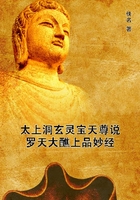THE DEMOCRATIZATION OF THE AUTOMOBILE
In many manufacturing lines, American genius for organization and large scale production has developed mammoth industries.In nearly all the tendency to combination and concentration has exercised a predominating influence.In the early years of the twentieth century the public realized, for the first time, that one corporation, the American Sugar Refining Company, controlled ninety-eight per cent of the business of refining sugar.Six large interests--Armour, Swift, Morris, the National Packing Company, Cudahy, and Schwarzschild and Sulzberger--had so concentrated the packing business that, by 1905, they slaughtered practically all the cattle shipped to Western centers and furnished most of the beef consumed in the large cities east of Pittsburgh.The "Tobacco Trust" had largely monopolized both the wholesale and retail trade in this article of luxury and had also made extensive inroads into the English market.The textile industry had not only transformed great centers of New England into an American Lancashire, but the Southern States, recovering from the demoralization of the Civil War, had begun to spin their own cotton and to send the finished product to all parts of the world.American shoe manufacturers had developed their art to a point where "American shoes" had acquired a distinctive standing in practically every European country.
It is hardly necessary to describe in detail each of these industries.In their broad outlines they merely repeat the story of steel, of oil, of agricultural machinery; they are the product of the same methods, the same initiative.There is one branch of American manufacture, however, that merits more detailed attention.If we scan the manufacturing statistics of 1917, one amazing fact stares us in the face.There are only three American industries whose product has attained the billion mark; one of these is steel, the other food products, while the third is an industry that was practically unknown in the United States fifteen years ago.Superlatives come naturally to mind in discussing American progress, but hardly any extravagant phrases could do justice to the development of American automobiles.In 1899 the United States produced 3700 motor vehicles; in 1916 we made 1,500,000.The man who now makes a personal profit of not far from $50,000,000 a year in this industry was a puttering mechanic when the twentieth century came in.If we capitalized Henry Ford's income, he is probably a richer man than Rockefeller; yet, as recently as 1905 his possessions consisted of a little shed of a factory which employed a dozen workmen.
Dazzling as is this personal success, its really important aspects are the things for which it stands.The American automobile has had its wildcat days; for the larger part, however, its leaders have paid little attention to Wall Street, but have limited their activities exclusively to manufacturing.
Moreover, the automobile illustrates more completely than any other industry the technical qualities that so largely explain our industrial progress.Above all, American manufacturing has developed three characteristics.These are quantity production, standardization, and the use of labor-saving machinery.It is because Ford and other manufacturers adapted these principles to making the automobile that the American motor industry has reached such gigantic proportions.
A few years ago an English manufacturer, seeking the explanation of America's ability to produce an excellent car so cheaply, made an interesting experiment.He obtained three American automobiles, all of the same "standardized" make, and gave them a long and racking tour over English highways.Workmen then took apart the three cars and threw the disjointed remains into a promiscuous heap.Every bolt, bar, gas tank, motor, wheel, and tire was taken from its accustomed place and piled up, a hideous mass of rubbish.Workmen then painstakingly put together three cars from these disordered elements.Three chauffeurs jumped on these cars, and they immediately started down the road and made a long journey just as acceptably as before.The Englishman had learned the secret of American success with automobiles.The one word "standardization" explained the mystery.















